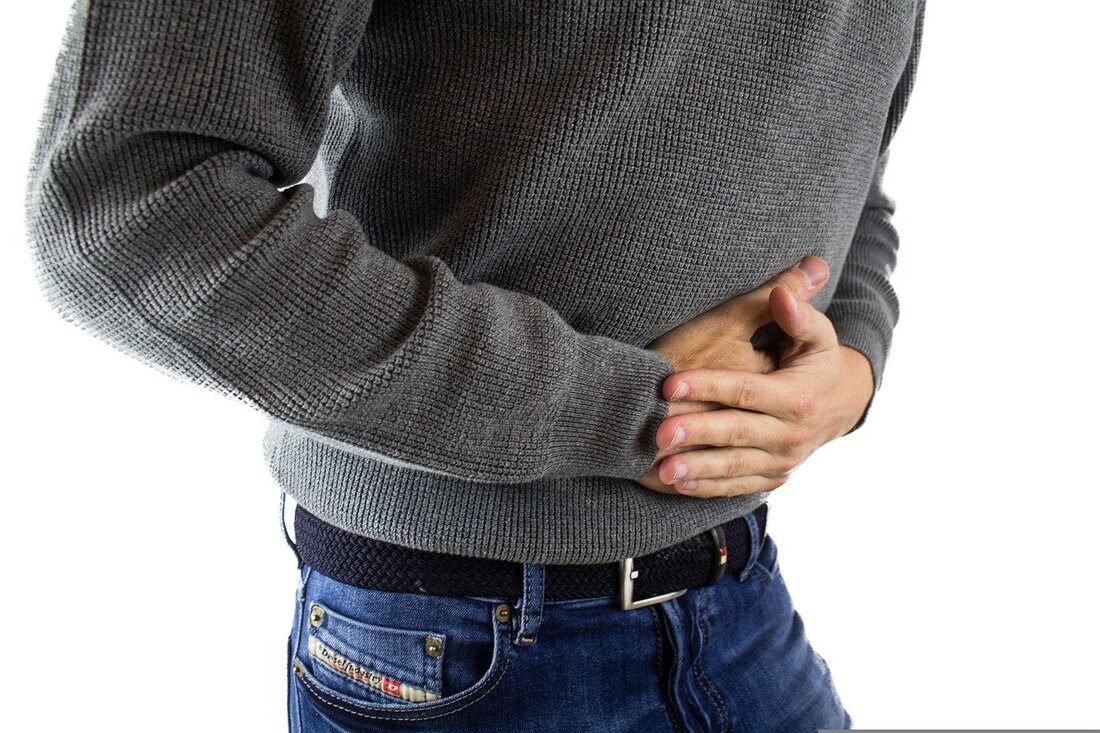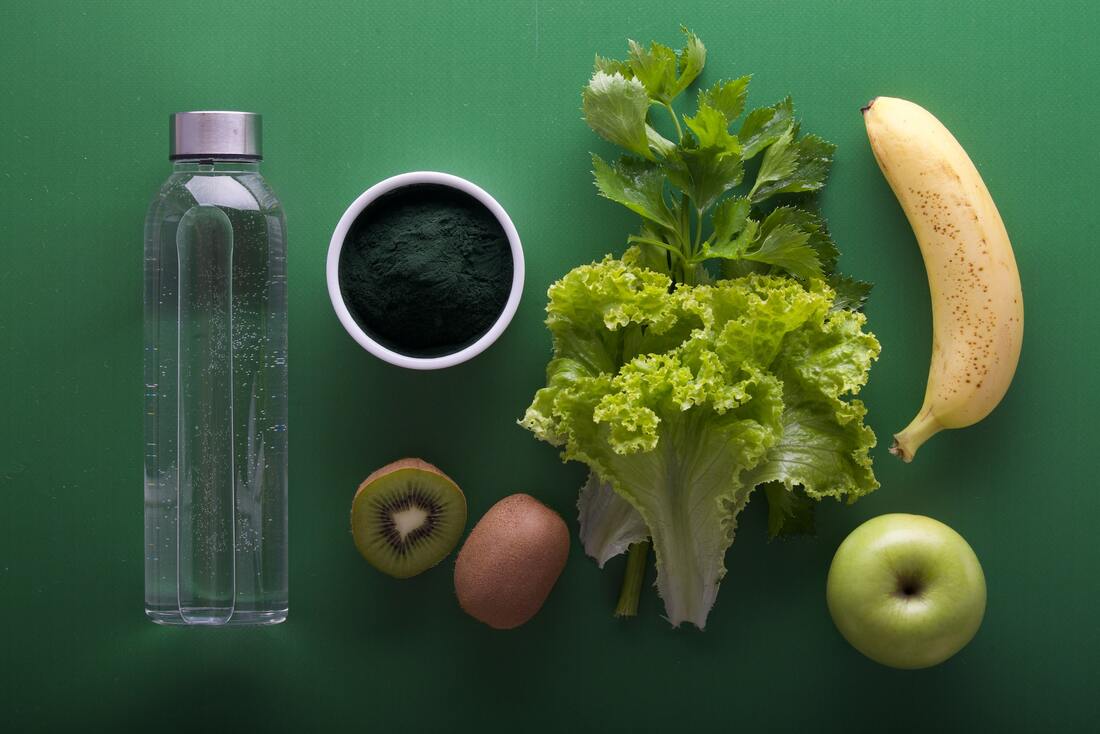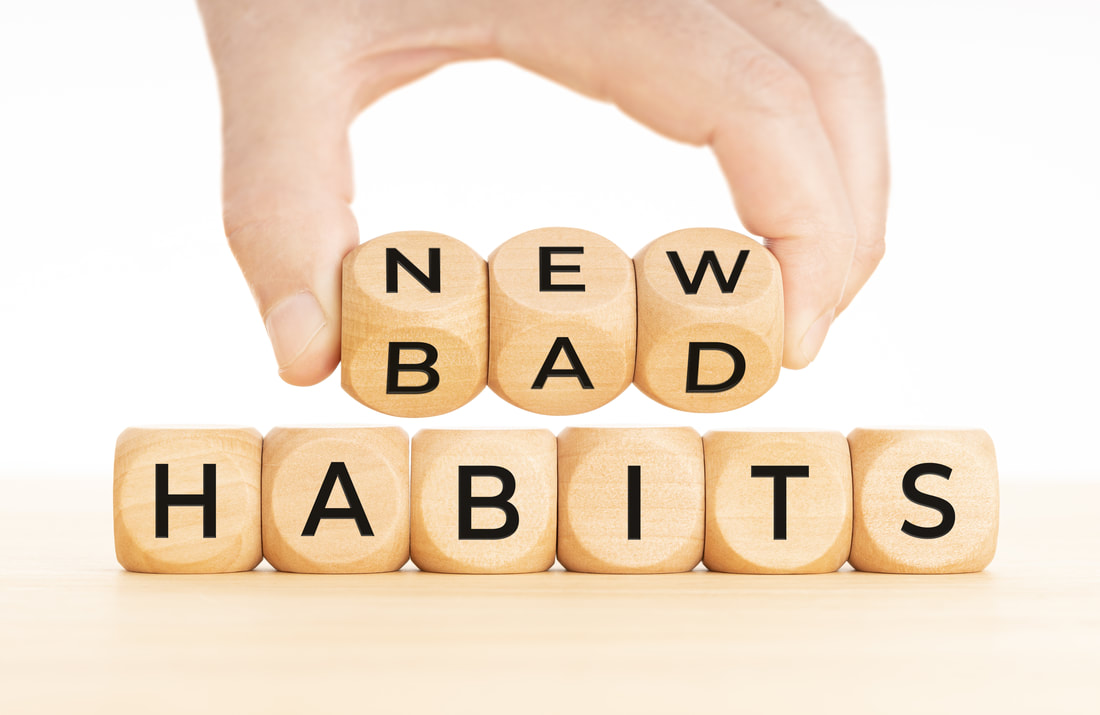|
Learn the definition of intermittent fasting and how to unlock its power. It is commonly said that losing weight is simply a matter of calories in versus calories out. Eat less than you usually do, and you’ll lose weight. Exercise more than usual, you might see the same effect. But what if changing when you eat, not what or how much, would do the trick? What Is Intermittent Fasting?Intermittent fasting restricts all of your eating to a specific period of time in the day. Most people eat throughout the day, starting with breakfast and ending with dinner. A person practicing intermittent fasting condenses all their eating into a shorter window of time. Intermittent fasting is a diet only in the sense that it involves making conscious choices about your food intake. It is not limiting what foods you eat or how much you eat. Some intermittent fasters eat multiple full meals during their eating window, while others might graze throughout that time. Let’s get right to the point: intermittent fasting is an effective practice for improving mental and physical health in a variety of ways (de Cabo & Mattson, 2019). Here are some of the backed-by-science benefits of intermittent fasting:
Intermittent Fasting SchedulesIntermittent Fasting 16/8Perhaps the easiest place to begin with intermittent fasting is to go 16 hours without eating. For example, a common pattern of fasting is from about 7:30pm to 11:30am each day. Therefore, the eating window starts at 11:30am and ends at 7:30pm. For most people, this can feel like “skipping breakfast”, although the goal is still to eat as many calories as they usually would during the eating hours. Intermittent Fasting 20/4 The longer you fast, the more your body experiences the benefits of fasting, such as ketosis and autophagy. That means many people attempt to limit their eating window to four hours a day, spending 20 hours fasting. A common way to do 20/4 intermittent fasting is to break one’s fast in the mid-afternoon, then finish eating in the early evening. Intermittent Fasting OMAD For the truly strong-willed, there is OMAD, or “One Meal a Day”. This is just what it sounds like – trying to cram all your caloric intake for the day into a single meal, or a short period of about an hour. OMAD fasting is effective in the short-term for weight loss, but not very sustainable in the long-term. It’s hard to get a full day’s calories into your body in just an hour! Although many people practice 16/8 fasting or 20/4 fasting daily or almost daily, OMAD fasting should be undertaken only temporarily. In SumIntermittent fasting is a simple, straightforward technique for accessing a variety of health benefits. While it is difficult at first to sit through one’s hunger, many people have experienced the rewards on the other side. That said, if you are considering trying intermittent fasting, try not to go into it with any particular set of expectations. The benefits to your health, your focus, or your waistline may not be easy to discern at first. Like so many techniques for promoting health, intermittent fasting needs time and commitment to show its effects. References
Learn what SIBO is, some of the potential causes of SIBO, and how you may be able to treat SIBO. A healthy digestive system is equipped with a system of checks and balances, keeping bacteria where they ought to be and keeping their numbers at appropriate levels. However, for several reasons, things can get out of balance, and the number of bacteria in the digestive system, especially in the upper part of the digestive system, can increase to abnormally high levels. When this happens, a condition called SIBO, or Small Intestinal Bacterial Overgrowth, may develop. This may lead to negative effects on health and well-being. What Is SIBO?SIBO, or Small Intestinal Bacterial Overgrowth, describes a condition either where the total number of bacteria in the small intestine increases, or there is a change in the diversity of bacterial species in the small intestine. To qualify as SIBO, these physiological changes must be accompanied by gastrointestinal discomfort or symptoms of digestive distress (Bures et al., 2010). In a healthy digestive system, there are usually fewer bacteria in the upper part of the digestive tract compared to the lower part of the digestive tract. Gut bacteria are usually at their lowest concentrations in the small intestines and their highest concentrations in the colon (Stearns et al., 2011). In SIBO, this balance is altered and there are excessive bacteria in the small intestines, leading to gastrointestinal symptoms (Pimental et al., 2020). Moreover, the bacteria found in the upper digestive tract of people with SIBO are from species more typically found in the lower parts of the digestive system. Symptoms of SIBOExcessive bacteria in the small intestine can interfere with how nutrients like carbohydrates, proteins, lipids, and vitamins are metabolized and absorbed. Bacteria in the small intestines may metabolize the foods you eat before your body’s cells have the time to extract and absorb nutrients. The metabolites that these bacteria produce may then cause gastrointestinal discomfort. In addition, elevated levels of gut bacteria or their metabolites may “leak” out of the intestine, leading to an inflammatory immune response (Ghoshal & Ghoshal, 2017). The effects of excessive bacteria in the small intestine may lead to gastrointestinal or nonspecific symptoms of SIBO. The most common symptoms of SIBO are digestive discomfort and can include (Rao & Bhagatwala, 2019)
Tests for SIBOThe gold standard for SIBO testing involves taking a sample from the small intestine and testing it for bacterial content (Choung et al., 2011). This is done via a medical procedure called an endoscopy in which a long tube is interested through the mouth and is guided into the intestines. This procedure is invasive, time-consuming, expensive, and requires sedation (Pimental et al., 2020). A simple, non-invasive, inexpensive alternative to endoscopic testing is a breath test. Breath tests rely on the fact that human cells do not produce the gases hydrogen and methane (Pimental et al., 2020). If these gases are detected in the breath, bacteria capable of producing these gases are implicated. Bacteria in the intestines metabolize the foods that you eat and produce these gases, which are then absorbed into your bloodstream and then eventually expelled through your lungs when you breathe (Gasbarrini et al., 2007). In a SIBO breath test, you ingest a specific carbohydrate (usually glucose or lactulose). You then provide a breath sample every fifteen minutes for anywhere between 90 to 240 minutes (Resaie et al., 2017). How to Treat SIBOThe goal of treatment for SIBO is the relief of uncomfortable symptoms and restoring the small intestine’s ability to clear food and absorb nutrients. This can be achieved by treating any underlying diseases, prescribing a course of SIBO-specific antibiotics, or using a SIBO diet. Dr. Mark Pimentel, a prominent SIBO researcher and gastroenterologist at Cedars-Sinai hospital, suggests that anyone who suspects they may have SIBO first undergo breath testing to confirm this and to determine which type of bacteria are present in excessive numbers. A course of antibiotics can then be prescribed to decrease bacterial numbers. Once the SIBO has been brought under control through the use of antibiotics, dietary changes may keep the GI tract functioning. This may involve changing the content of what you eat, taking in fewer complex carbohydrates that support intestinal bacteria. Dietary changes to reign in SIBO may also involve increasing the spacing between meals, allowing your digestive system ample time to process and digest food. This may mean a period of 4 to 5 hours between meals, although longer periods, such as in intermittent fasting, may also be beneficial. In SumThe bacteria that live in the human gut are essential to good health and well-being. They play a crucial part in extracting nutrients from the food that you eat and in creating the chemical building blocks of your cells. However, when these bacteria become too plentiful, or when they migrate to places where they don’t belong, you may experience symptoms of gastrointestinal discomfort. Luckily, relief may be possible. Straightforward, noninvasive laboratory tests exist to determine whether you have excessive bacteria in your digestive tract. These tests may even be able to determine the specific bacterial species that are present in excess. Treatment may also be relatively straightforward with many References
Learn what a leaky gut is and how you may be able to overcome a leaky gut. Leaky gut can describe a range of disorders, syndromes, conditions, or clusters of symptoms affecting the lining of the intestines. The intestines are long tube-like structures that are part of the digestive system. After it’s swallowed, food moves to the stomach where it’s broken down and combined with digestive enzymes. This food mixture then travels through the intestines. When everything is working well, nutrients and water are extracted through the intestinal wall and taken into the bloodstream. Within the intestines, different cell types work together to ensure that while nutrients travel from the digestive tract into the bloodstream, potentially harmful substances do not. The cells that make up the walls of the intestines are equipped with junctions that allow nutrients to pass through, while bacteria, toxins, and other harmful substances are prevented from doing so (Kinashi & Hase, 2021). The intestines also contain mucus, peptides, proteins, and a variety of helpful bacteria that all play a role in ensuring that only nutrients make it through to the bloodstream. For a variety of reasons, this complex system may become dysfunctional, and harmful substances may “leak” from the intestines into the bloodstream (Camileri, 2019). In leaky gut syndrome, the intestines have become pathologically or chronically permeable - they regularly let bacteria, toxins, and other harmful substances move from the gut into the bloodstream. The presence of harmful toxins in the bloodstream can cause the body to launch an immune response. The immune response may take several different forms including inflammation. Although the toxins may enter the bloodstream through the intestines, the inflammatory immune response may appear in almost any part of the body. There may even be a link between leaky gut and mental and developmental disorders including depression, anxiety, autism, and schizophrenia (Schmidt, 2015). Leaky Gut SymptomsSince leaky gut can lead to inflammation and a systemic immune response, symptoms may be very broad and may potentially include almost anything. However, digestive system discomfort may be the most common symptom of leaky gut. According to the Cleveland Clinic, symptoms of digestive discomfort that may be symptomatic of potential leaky gut may include:
How To Fix a Leaky GutIf an underlying medical condition like Inflammatory Bowel Disease or Celiac disease is responsible for the leaky gut, addressing these broader medical concerns may also address the difficulties with leaky gut. In the absence of treatment for a medical condition, you may be able to gain relief using:
In SumIf you find yourself with symptoms of leaky gut syndrome, all is not lost. You may be able to reintroduce order by changing your diet or by introducing supplements. This may be a relatively straightforward process that you can achieve by eating more fresh, unprocessed foods and fewer processed, fatty, and sugary foods. However, your path to recovery from leaky gut may be more complicated - requiring you to craft a specific diet and incorporate supplements. This may require you to move forward in your quest for gut health with the support of a qualified professional like your doctor or a registered dietician. Whether you opt to tackle small manageable changes yourself or to work with a professional on more intensive and targeted changes, you may be able to achieve relief from the discomfort of a leaky gut. References
Learn the definition of body positivity and how you can practice it in your life. In American culture, forces internal and external draw our attention continuously to how we can “fix” our bodies to make them somehow finally acceptable. We all engage in this kind of thinking on some level – it’s so ubiquitous that it’s become ingrained, automatic. It is only in the last couple of generations that voices have begun to challenge the idea that our bodies are in constant need of improvement. From the feminist movement of the 1960s to movements led by Black women in the 1980s to present-day movements on social media, a new line of thinking has instead promoted body positivity (Cwynar-Horta, 2016; Darwin & Miller, 2021). Body positivity has two elements: (1) the acceptance of all bodies without regard to their shape, size, or features; and (2) a focus on health and functionality instead of appearance (Cohen et al., 2019b; Sastre, 2014). What does this mean? Instead of limiting our understanding of our bodies to how they look, and whether they meet certain expectations we commonly hold for bodies, body positivity encourages us to respect and honor the inherent value in all bodies (Sastre, 2014). Body positivity also means focusing on what our bodies can do and placing higher value on the body’s capabilities than on whether it looks a certain way (Cohen et al., 2019b). Another alternative to body positivity is called body neutrality. This approach involves simply placing less emphasis on physical appearance in the first place (Rees, 2019). It is thought that taking attention away from one’s appearance altogether will help people focus more on finding value in the rest of their being, such as their personality and the things they can do (Rees, 2019). Body Positivity TipsHow can you practice body positivity in your own life? Below are some tips. While using social media has been associated with lots of poorer psychological outcomes, this is one situation where being on social media can actually be helpful! Looking at body positive content on social media has been associated with better psychological health in several studies. Specifically, people seem to appreciate their own bodies more and report more satisfaction with their bodies as they see more of this content (Nelson et al., 2022). It may be that people build a healthier body image over time as they view body positive content, becoming less likely to compare themselves to others in the process (Rodgers et al., 2022). So we encourage you to look at body positive content online if you would like to feel better about your body. Researchers have asked the question of whether all body positive media are created equal. What they have found is that messages that are pressuring or prescriptive may not be as helpful as messages that promote acceptance and encourage agency (Betz & Ramsey, 2017; Legault & Sago, 2022). What does that mean? Let’s look at a couple examples. In a culture that promotes thinness, a post that celebrates curviness can be body positive. However, there is a difference between a caption reading “Never be ashamed of your curves” and “Sending love to all my curvy sisters out there”. Maybe you can feel the difference – the first message creates pressure to not feel shame, while the other just promotes a feeling of solidarity. For you as a consumer of media, these research findings suggest you will be best served by looking at content that encourages you to accept yourself just as you are. Content that promotes a certain body type, even if it is pushing back against cultural standards by celebrating something that is not traditionally seen as attractive, may make you feel badly if your body doesn’t quite fit with that particular message. Here's another tip: It might be helpful to think of your body as a “process”, not an “object” (Franzoi, 1995). There are two key aspects to this approach: 1. A body in process is a body that does things.It is defined by its actions, the energy it contains, its capacity to change the world. The body as an object is simply an appearance, deriving no value from what it can do. 2. A body in process is forever changing.Nearly everything we judge in our bodies is impermanent. If we can accept that nothing about our bodies, neither the “good” nor the “bad”, is permanent, then we don’t have to obsess over those parts of us. In SumThere are countless examples of people online practicing body positivity. While we encourage you to embrace and borrow freely from other people’s creativity, you are the one and only authority on what body positivity will look like for you. If you can, be patient and gentle with yourself in your efforts to build body positivity in your life. We all have a lot of programming to undo. Every step is a victory. References
Learn what emotional eating is and how to overcome it. Have you ever casually told somebody that you were going to go “eat your feelings”? Have you come home late from work and ended up eating something entirely different from what you planned to have for dinner? Or maybe you have a ritual involving your favorite TV show and cookies, ice cream, or potato chips? Feelings and eating are closely connected for virtually all of us. Sometimes our emotions aren’t the byproduct of eating, but the driving force behind it. In this article, you’ll learn about the definition and scientific background of this behavior, called emotional eating, as well as what you can do to overcome emotional eating. What is Emotional Eating?Emotional eating is when we eat as a response to experiencing negative emotions or stress (Arnow et al., 1994). Eating food when we feel bad – especially foods that are highly rewarding and satisfying, such as those high in fat or sugar – gives us temporary relief from the negative emotions we’re experiencing. We can identify whether emotional eating is happening by paying attention to the emotional context of our eating. Any situation that involves negative emotions could trigger somebody to emotionally eat. This is because two common strategies we use to deal with negative feelings – strategies that are more common in people who emotionally eat (Spoor et al., 2007) – are trying to cope with the emotion directly or avoiding the emotion altogether. In other words, we emotionally eat to head off a bad feeling that’s coming down the road or deal with one that’s already here. Emotional eating is also more common in people who have trouble identifying their feelings, regulating their emotions, and who are highly susceptible to getting stressed out (van Strien, 2018). One study found some gender differences in the likelihood of emotional eating: women were more likely to emotionally eat when stressed out, while men were more likely to emotionally eat when bored or anxious (Bennett et al., 2012). But, emotional eating is not an official disorder you can find in a medical volume such as the Diagnostic and Statistical Manual of Mental Disorders (commonly referred to as the DSM). However, it functions in a similar way to “traditional” eating disorders such as binge-eating disorder (BED). Researchers have found that many people with BED also are emotional eaters, but not all of them. And the reverse is true as well: most emotional eaters do not have a diagnosed eating disorder (Lindeman & Stark, 2001). While emotional eating isn’t a disorder, people who emotionally eat are more likely to be overweight or obese (Frayn & Knauper, 2017). They are also at greater risk of becoming someone who binge eats than are people who don’t emotionally eat (Arnow et al., 1994; Ricca et al., 2009). How to Stop Emotional EatingThe following are some science-based steps to reduce your emotional eating. 1. Get in touch with your hunger signals.Some people may emotionally eat because they are not aware of the signals that their body is hungry (Tan & Chow, 2014). For example, some people may misinterpret their body’s reaction to stress as a signal that they need to eat. Or, you may have difficulty noticing signs that you have eaten enough, which will make it harder to recognize emotional eating as unnecessary. 2. Get suspicious of your impulse to eat.First, a caveat: this is not a recommendation that you second-guess every thought about food you have. However, it is clear that people who emotionally eat may not recognize the link between their emotional state and their urge to eat (Kemp & Kopp, 2011). So, my advice is simple: the next time you’re hungry and it’s not mealtime, get curious: what else am I experiencing right now? Are there feelings I’m having but not really acknowledging? If I ate something, would that feeling go away? 3. Minimize temptation.You’ve probably never heard anybody complain that they went overboard mindlessly eating kale, have you? The foods that most of us crave when we emotionally eat are tempting for good reason: they deliver a quick, powerful rush of satisfaction (Ganley, 1989). If you want to reduce the likelihood that you will emotionally eat, you may need to remove some of the chief suspects – your favorite snack foods – from your home, your office, or even your car. In SumAll of us have likely engaged in emotional eating at some point. Food is so effective at changing our moods and so easy to access that it’s almost inevitable. Thankfully, this is a behavioral pattern that we can recognize and change. Each time you catch yourself emotionally eating is an opportunity to learn something about yourself. What emotions are hard for you to handle? What other coping skills would you like to strengthen? With time and effort, you may see changes that go beyond your eating habits or your waistline. References
Humans have been fasting for thousands of years, but modern research is just starting to unveil its power. Our lives revolve around food. Our ancestors thought about little else, and it’s still one of the first things we think about in the mornings. We organize our social connections and our daily schedule around eating. We relish cooking shows, farmer’s markets, and the thriving gardens in our neighborhoods – they all exemplify the bounty and beauty of food in our lives. In our culture of abundance, we can easily lose sight of the benefits of going without – of intentionally choosing not to consume. As this article will demonstrate, the benefits of fasting are plentiful and powerful – enough to make it potentially a key component of your self-care routine. What Is Fasting?Fasting means not eating for a certain period of time. While fasting has become popular in recent years as a health-promoting lifestyle choice, it is a practice with millennia of history, deeply rooted in several religious traditions (Kerndt et al., 1982). Ancient Greeks practiced fasting to prepare for rituals and celebrations. The Old Testament suggests that fasting is a powerful way to connect with the divine, and monks have practiced fasting for centuries. Fasting has also been utilized as a form of protest, with political prisoners often fasting during their incarceration. In the last couple centuries, doctors and scientists began to observe and track the health benefits of fasting, especially for weight loss. In the last several decades, benefits far beyond reducing our waistlines have begun to be discovered (de Cabo & Mattson, 2019). Fasting has profound effects on our metabolism and how our cells operate and regenerate, which can reduce hypertension, arthritis, and neurodegeneration (the breaking down of nerve cells, such as in the brain) (Longo & Mattson, 2014). Fasting also strengthens the immune system and makes our bodies more stress resilient (Longo & Mattson, 2014). Some studies have found that fasting is even as effective as the typically-prescribed drugs in treating seizure disorders and conditions such as rheumatoid arthritis (Hartman et al., 2012; Muller et al., 2001). Through many processes, fasting helps the body stay young. It literally refreshes your cells. This means that it may be able to help with degenerative diseases like Alzheimer’s and Parkinson’s and support people in overcoming strokes (Gudden et al., 2021). While these effects are more easily seen in older adults, it is possible that fasting can help with cognitive functioning in younger adults as well (Seidler & Barrow, 2021). One of the coolest potential applications of fasting is in fighting cancer. Cancerous cells derive their sustenance from what the host body eats, so fasting deprives the cancerous cells of the sustenance they need to survive. This is why some doctors are now recommending that people fast while undergoing chemotherapy and other kinds of cancer treatments (Nencioni et al., 2018). Fasting is also a well-established way to lose weight. Studies have found that people who fast, whether intermittently or for very long periods of time, lose weight (Cho et al., 2019). Since intermittent fasting in particular may be more sustainable over time than diets that focus on restricting overall calories, it is often described as one of the most effective ways to lose weight (Welton et al., 2020). TipsIt may be intimidating to try fasting. Here are some tips for how to successfully introduce fasting into your lifestyle: 1. Start modestly.Consider starting with one sixteen-hour fast in a week. Pick a day that will be low stress, where there are few demands on your time and energy. Choose a food for breaking your fast that you will look forward to, but not one that you might be tempted to eat before the fast is done. 2. Break your fast judiciously.If you eat something carb-heavy to break your fast, your digestive system will rush to process that new source of energy, giving you a big spike and dip in your energy levels. So, break your fast with a smaller meal that includes a good source of protein, such as dairy or chicken, and ideally some fiber as well. This ensures a smoother transition into the eating window. 3. Embrace your hunger.You might not believe it when you are first starting out, but hunger doesn’t last. In this regard, it is like most sensations we have – temporary. So, expect to feel hungry – and expect that the feeling will pass. If you have a mindfulness practice, consider using it to acknowledge, but not become controlled by, your hunger. 4. Consult with your doctor.For many of us, eating regular meals is important. Or perhaps you take a morning medication that wouldn’t go down well on an empty stomach. It’s always a safe bet to talk to your doctor before trying something like fasting. In SumFasting is a time-honored human tradition, with origins in spiritual traditions and abundant modern research documenting its physical health benefits. If you are not someone who has tried fasting before, it stands to benefit you in many ways. At the same time, fasting is not for everyone. If you have, or have had, a complicated relationship with eating, move very slowly with fasting. Fasting is not sustainable, or even worth the effort, if it causes you emotional distress or discomfort. References
Discover tips and ideas you can use to make your life healthier. There is more than one way to stay healthy, and if you asked people around you what a healthy lifestyle is, chances are you’d get a different answer every time. This difference stems from the fact that everyone makes choices based on their cultural and personal priorities and can only access options available within their socioeconomic and geographical environments (Cockerham, 2021). Despite differences in definitions, scientists have long been conducting studies focused on the effects of lifestyle on health and wellbeing. A large meta-analysis that included the health outcome data of over 500,000 individuals concluded that adherence to a healthy lifestyle was linked to lower mortality risk (Loef and Walach, 2012). A more recent study tracked the health habits and outcomes of over 120,000 participants for three decades. Individuals that met the researcher’s healthy lifestyle criteria were far less likely to die prematurely because of cardiovascular disease or cancer (Li et al., 2018). But how much lower is the risk of premature deaths when people live healthy lifestyles? According to this study, women with healthy habits lived an average of fourteen years longer than their counterparts with unhealthy lifestyles (Li et al., 2018). In contrast, men with healthy lifestyles lived approximately twelve additional years (Li et al., 2018). Of course, a longer lifespan isn’t the only benefit of a healthy lifestyle. A study with over 3,000 men and women between ages 55 and 85 has shown that individuals with healthy lifestyles performed better than their counterparts in all measures (Visser et al., 2018). For instance, the individuals in the healthy lifestyle group were faster in physical agility tests and less likely to display symptoms of depression (Visser et al., 2018). They also had slower declines in cognitive function and social interactions (Visser et al., 2018). In short, living a healthy lifestyle can help us feel healthier and be less likely to be depressed. Moreover, we might live an additional decade by adopting health-promoting habits. How To Build a Healthy LifestyleThe secret to building healthy habits that last is to choose sustainable behaviors that you can stick to. Here are some tips: 1. Choose healthy habits that you enjoySo how do we know if a behavior is sustainable? The sustainability of a behavior depends on how much time and effort it requires and whether we are willing to commit to it day after day. Thus, habits that require the least time and effort might be easier to incorporate into our daily lives. Yet, there is another secret ingredient to make habits stick: likability. As discussed earlier, many people find detrimental behaviors hard to shed because they feel good. It becomes even more challenging if we attempt to replace them with habits that we don’t enjoy. Therefore, if we want our habits to last a long time, we might pick those we like and enjoy doing. 2. Social support and healthy habitsAnother factor that may help lifestyle changes stick is the support from others. If you have family and friends who encourage you to take healthy steps and cheer you on your journey, you may find it easier to commit to those changes. If you don’t have a support system, no worries. You might be able to find support groups or organizations where you live or online and interact with others making similar changes. Moreover, you might also use apps to help you set goals, send you reminders, and display daily affirmations. 3. Create an exercise routineLack of physical activity has many harmful consequences, ranging from cardiovascular disease to atrophied muscles and metabolic syndrome (Bowden Davies et al., 2019). Unfortunately, many adults in the U.S. don’t get enough physical activity. But how much activity is considered enough? According to the World Health Organization (WHO) recommendations, adults should aim for a minimum of 150 minutes of moderate or 75 minutes of vigorous aerobic activity per week (WHO, 2010). Moderate activity is defined as an exercise that increases your heart rate by approximately 40% from its resting state, whereas a vigorous activity raises it by 60% or higher (MacIntosh et al., 2021). 4. Stick to a Healthy DietA healthy diet has two primary goals: prevent malnutrition and maintain a healthy weight. Unfortunately, many people don’t eat whole foods and consume high amounts of unhealthy fats (i.e., saturated and trans fats) and added sugars. According to the United States National Heart, Lung, and Blood Institute (NHLBI), a healthy diet should include lean proteins (i.e., nuts, beans, fish, poultry, eggs, etc.) and limit added sugars, unhealthy fats, and excess sodium. Furthermore, it might include several servings of fruits, vegetables, and whole grains for sufficient fiber, calorie, and micronutrient (i.e., vitamins and minerals) intake (NHLBI, 2022). In SumGradually replacing harmful habits with beneficial ones that you enjoy can help you attain a healthy lifestyle and increase your well-being. References
Let’s look at what clean eating really is, the benefits of a clean diet, and ways to eat cleaner. Before we begin, let’s talk about the word choices we use for food. To be clear, there’s no such thing as “dirty eating.” No food on its own is inherently bad, perhaps unless it’s expired or is highly processed. All types of food—whether it be leafy green salads or saucy spaghetti with a delicious piece of restaurant bread—can be enjoyed in moderation. The philosophy behind clean eating is relatively simple. Clean eating encourages the consumption of whole foods, while minimizing or eliminating processed foods that contain added sugars, salts, and artificial ingredients. Benefits of this dietary choice include feeling more energized, improving heart health, and losing weight if that is what is desired (Baker & Walsh, 2020). While clean eating may be a great option for you if you’re looking to incorporate more whole and natural foods into your diet, researchers also suggest that being too restrictive about your food plan may be detrimental (McCartney, 2016). Eliminating all foods with added sugars or limiting yourself from indulging in cravings from time to time may not only lead to feelings of irritability and increased hunger, but you may end up overeating to compensate or could be at an increased risk of developing an eating disorder (Ambwani et al., 2019). A good reminder here is to choose a dietary lifestyle that is best for your body and speak with a healthcare provider about any nutritional questions or concerns you may have. Food ListLet’s look at some healthy foods to incorporate into your “clean” diet. This list is by no means exhaustive but includes a few options for different forms of macronutrients and micronutrients (USDHHS, 2014). CarbohydratesWith carbs, you may want to stick to options that are lower in processed sugars and higher in fiber. Here are some options:
ProteinsWhen we talk about different protein options, we want to make sure they are high quality (e.g., organic or grass-fed). Below are options of healthy proteins to try.
FatsMost of the healthy fats from which we can derive nutrition are often found in whole, plant-based food options. Here is a list of some healthy fats you may want to include in some of your home recipes.
Tips to Get StartedClean eating isn’t something that can be done overnight and may take time to build up to before adopting it as a lifestyle choice. Here are some tips to help as you start (or continue) a clean eating journey.
In SumRevamping your diet can be a challenge, but it is something you can achieve. If you’re looking for a new diet or just to eat healthier, clean eating may be a choice you want to consider. A gentle reminder that “clean eating” is a lifestyle choice and may take time to get used to. If you find yourself struggling to keep up with clean eating habits, try your best to be kind to yourself and remember to focus on eating in moderation. Hopefully, this article helped you gain a foundational understanding of clean eating and provided tips to start your clean eating journey. References
Discover the many ways to detoxify your body, all with the potential to powerfully impact your long-term health. Today, we are continually interacting with things in our environment that may introduce toxins into our bodies, from the food we eat to our pillowcases to our cooking pans. Toxins are organic and non-organic matter that, once they come into contact with our bodies, can cause all sorts of mental and physical health problems (Trasande & Liu, 2011). When you hear the word toxins, you might initially think of heavy metals in drinking water, pesticides in crops, or lead paint on the walls of your house. And not without reason: the cost of exposure to environmental toxins, even just among children in the USA, is approaching $100 billion dollars annually (Trasande & Liu, 2011). But if we give the word “toxin” a broader definition, there are plenty of other, everyday encounters between our bodies and the world that cause us harm. In this article we will have a look at how we can detoxify our bodies to live cleaner, longer, healthier lives. What Does It Mean to Detoxify Your Body?According to the Centers for Disease Control and Prevention, detoxification involves removing a toxin or its effects from someone (CDC, 2010). In simple terms, detoxifying your body is removing something harmful from it, or alleviating the harms it has caused. How to Detoxify Your Body at Home
In SumDetoxifying your body, at its core, means returning to a more natural way of living. It means renouncing many of the modern innovations that make our lives more convenient but expose us to unnatural and harmful chemicals and substances. Detoxing is as much about what you don’t do as what you do. So, when you think about detoxifying your own body, remember that the solutions are going to be specific to your own circumstances. If you try to think big and broad about detoxification; you would be doing your long-term health a real favor. Reference
In this article, we’ll discuss what bad habits are and how to break them. A habit is any action we perform so often that it becomes almost an involuntary response. If this habit becomes undesirable, we may consider it to be a “bad habit”. If you open the dictionary and look up bad habits, one of the definitions you’ll see is “a patterned behavior regarded as detrimental to one’s physical or mental health, which is often linked to a lack of self-control” (Segen’s Medical Dictionary, n.d.). Essentially, a bad habit is a recurring action you do that typically provides instant satisfaction but often leads to long-term problems. Examples of Bad Habits
How to Break Bad HabitsNow that we know what bad habits are and what causes them, how do we break them? Sure, people may tell you to just stop, but that’s easier said than done. Here are some steps that may help you break bad habits:
In SumIn terms of enacting life changes, everyone starts from somewhere. The first step is to identify the bad habit and accept that you are willing to change. Breaking bad habits takes time and effort, and as we discussed, it requires replacing them with better habits. You may not be successful all the time, but that doesn’t mean you aren’t making meaningful steps in the right direction. It is more important that you be persistent and kind to yourself on your journey. References
|
AuthorPamela (Pami) Parker currently serves as a holistic practitioner, coach and teacher. Her intention is to be a compassionate guide to those who choose to experience a healthier, happier and more peaceful way of life. Categories
All
|
Company Details
The Self-Care Cafe is a member of The Conscious Center
Dutch Chamber of Commerce (KvK) Registration #64532593
Taxation (VAT) Number: NL670496157B01
Privacy Policy
The Self-Care Cafe is a member of The Conscious Center
Dutch Chamber of Commerce (KvK) Registration #64532593
Taxation (VAT) Number: NL670496157B01
Privacy Policy










